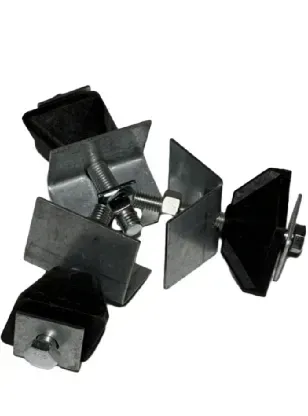loading...
- No. 9, Xingyuan South Street, Dongwaihuan Road, Zaoqiang County, Hengshui, Hebei, China
- admin@zjcomposites.com
- +86 15097380338
- Welcome to visit our website!
Innovative Applications and Benefits of GFRP Grating for Modern Infrastructure Solutions
Understanding GFRP Grating A Versatile Solution for Modern Applications
Glass Fiber Reinforced Polymer (GFRP) grating has emerged as a highly versatile and robust material, widely used in various industries due to its superior strength, lightweight nature, and resistance to environmental degradation. This article explores the core advantages, applications, and future prospects of GFRP grating, shedding light on why it has become a popular choice in contemporary construction and industrial environments.
What is GFRP Grating?
GFRP grating is composed of a polymer matrix reinforced with glass fibers, which provides exceptional mechanical properties and stability. Unlike traditional materials such as metal or wood, GFRP grating is non-corrosive, making it an ideal solution for harsh environments such as chemical processing plants, wastewater treatment facilities, and coastal applications where exposure to moisture and chemicals could lead to rapid deterioration.
Key Advantages of GFRP Grating
1. Corrosion Resistance One of the most significant benefits of GFRP grating is its resistance to corrosion. Conventional materials, particularly metals, can corrode over time when exposed to moisture, salt, and various chemicals. GFRP’s inherent resistance to these elements ensures longevity even in the most challenging conditions.
2. Lightweight yet Strong GFRP grating is substantially lighter than its metal counterparts while maintaining comparable strength. This attribute simplifies the installation process, reduces transportation costs, and minimizes the structural load on supporting beams, making it a practical choice for various applications.
3. Customized Design Options GFRP grating can be customized in terms of size, thickness, and color to meet specific project needs. This flexibility allows architects and engineers to integrate grating seamlessly into their designs, enhancing both functionality and aesthetics.
4. Low Maintenance Costs The durability and resistance to corrosion of GFRP grating significantly reduce maintenance requirements. Unlike metal grating, which may require regular inspections and treatments to prevent rust, GFRP grating typically needs only periodic cleaning to maintain its appearance and performance.
5. Safety Features GFRP grating offers excellent slip resistance, making it an ideal choice for walkways, platforms, and industrial flooring where safety is a concern. Its textured surface enhances traction, reducing the likelihood of slips and falls, which is crucial in settings with high foot traffic or equipment operation.
Applications of GFRP Grating
gfrp grating

Due to its numerous advantages, GFRP grating is used across a wide range of applications
- Industrial Flooring GFRP grating is commonly employed in chemical plants, food processing facilities, and power plants, where resistance to chemicals and ease of cleaning are paramount.
- Walkways and Platforms Many outdoor installations, such as coastal boardwalks and pedestrian walkways in marine environments, benefit from the lightweight and weather-resistant properties of GFRP grating.
- Wastewater Treatment The non-corrosive nature of GFRP makes it particularly suited for use in wastewater treatment facilities, where it can withstand exposure to harsh chemicals and liquids.
- Electrical Enclosures GFRP's insulating properties make it a suitable material for electrical enclosures and equipment housing, providing safety and protection from environmental damage.
Future Prospects
As industries continue to seek sustainable and efficient solutions, the demand for GFRP grating is expected to grow. Innovations in manufacturing processes and material compositions may enhance its properties even further, opening doors for new applications in sectors like aerospace, automotive, and renewable energy.
The increasing emphasis on reducing the carbon footprint in construction and manufacturing processes aligns with the use of GFRP grating, which requires less energy to produce and transport compared to traditional materials. Furthermore, GFRP’s recyclability at the end of its life cycle positions it as a forward-thinking choice in the quest for sustainable building materials.
Conclusion
In summary, GFRP grating stands out as a robust, flexible, and sustainable alternative to traditional materials in various applications. Its numerous advantages, including corrosion resistance, lightweight nature, and slip resistance, make it a favored choice across diverse industries. As technological advancements continue to evolve, GFRP grating is poised to play an increasingly significant role in modern construction and industrial projects, driving innovation and sustainability in the materials market.
-
Transform Your Spaces with FRP Grating SolutionsNewsNov.04,2024
-
The Versatility and Strength of FRP RodsNewsNov.04,2024
-
The Excellence of Fiberglass Water TanksNewsNov.04,2024
-
The Benefits of FRP Grating for Your ProjectsNewsNov.04,2024
-
Elevate Your Efficiency with FRP Pressure VesselsNewsNov.04,2024
-
Welcome to the World of FRP Pressure VesselsNewsOct.12,2024
-
Unveiling the Future of Filtration: Why FRP Filter Vessels are a Game ChangerNewsOct.12,2024
